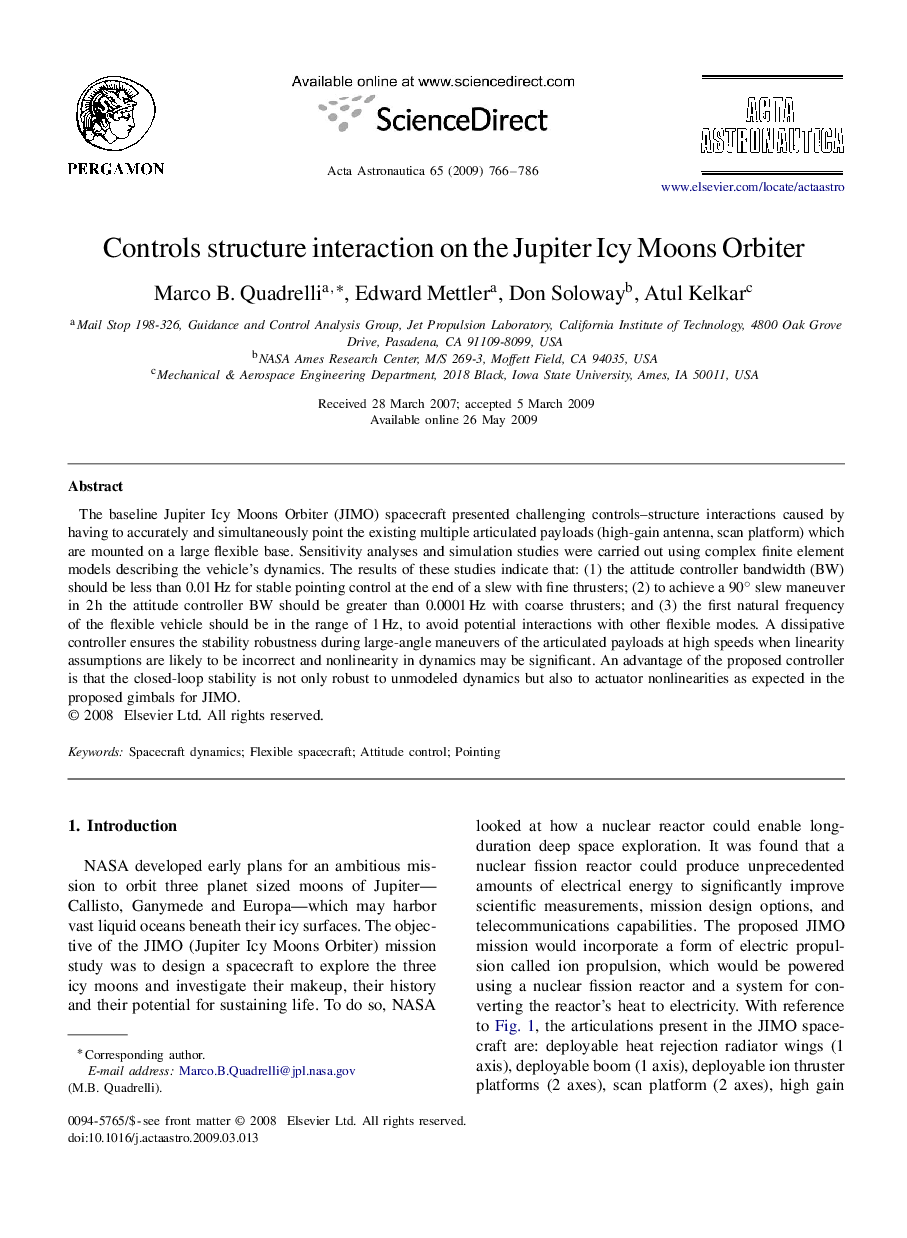| Article ID | Journal | Published Year | Pages | File Type |
|---|---|---|---|---|
| 1716584 | Acta Astronautica | 2009 | 21 Pages |
Abstract
The baseline Jupiter Icy Moons Orbiter (JIMO) spacecraft presented challenging controls-structure interactions caused by having to accurately and simultaneously point the existing multiple articulated payloads (high-gain antenna, scan platform) which are mounted on a large flexible base. Sensitivity analyses and simulation studies were carried out using complex finite element models describing the vehicle's dynamics. The results of these studies indicate that: (1) the attitude controller bandwidth (BW) should be less than 0.01Â Hz for stable pointing control at the end of a slew with fine thrusters; (2) to achieve a 90â slew maneuver in 2Â h the attitude controller BW should be greater than 0.0001Â Hz with coarse thrusters; and (3) the first natural frequency of the flexible vehicle should be in the range of 1Â Hz, to avoid potential interactions with other flexible modes. A dissipative controller ensures the stability robustness during large-angle maneuvers of the articulated payloads at high speeds when linearity assumptions are likely to be incorrect and nonlinearity in dynamics may be significant. An advantage of the proposed controller is that the closed-loop stability is not only robust to unmodeled dynamics but also to actuator nonlinearities as expected in the proposed gimbals for JIMO.
Related Topics
Physical Sciences and Engineering
Engineering
Aerospace Engineering
Authors
Marco B. Quadrelli, Edward Mettler, Don Soloway, Atul Kelkar,
